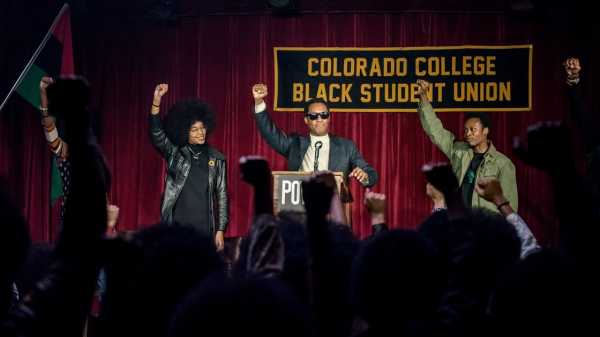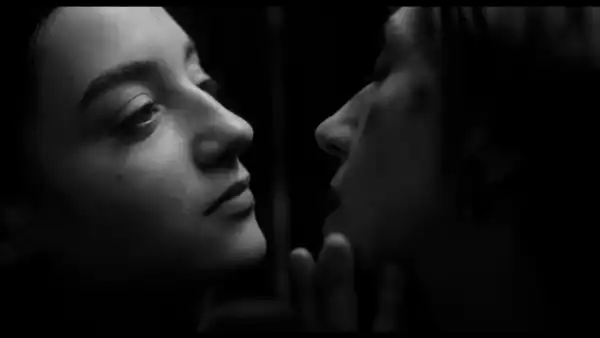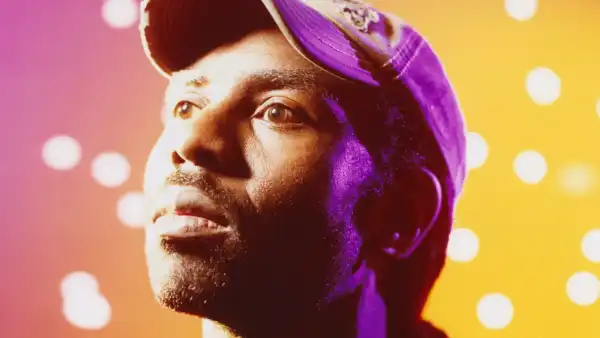
Spike Lee’s new film, “BlacKkKlansman,” is, in its contours, a police procedural drama. It is set in the early nineteen-seventies and based on a true story, in which two officers in Colorado Springs infiltrate a group that’s planning criminal acts of violence—the group, of course, is the Ku Klux Klan, the intended targets are black people, and the officer leading the investigation and “joining” the group is a black man. Yet the parts of the film devoted to police action occupy barely half of its two-hour-plus running time. “BlacKkKlansman” is an action film, of sorts, yet Lee makes nearly half its action intellectual action, the dramatization of the political ideas and cultural context on which the plotting depends. By doing so, Lee has made a movie of bold and brilliant paradox. “BlacKkKlansman” is one of his most politically passionate films, a vision of social pathology and moral devastation that is also, often, bouncy, riffy, and Top Forty catchy; for all its revelations of racist rot at the core of American society, Lee also offers a clear, specific, and wondrous, if wary, view of change that’s possible because, at one time and to some extent, it actually happened.
John David Washington stars as Ron Stallworth, a young black man who becomes the first black police officer in Colorado Springs. (The interview scene, featuring Isiah Whitlock, Jr., as one of the two officials interviewing Ron, is itself a minor classic.) Stuck in an office job in the station house, Ron wants action—and soon gets it; his boss, Chief Bridges (Robert John Burke), assigns him to undercover duty. Ron’s first assignment is the infiltration and surveillance of a speech by Kwame Ture, born Stokely Carmichael, a longtime activist and former Black Panther leader who has come to town to give a speech under the aegis of the Colorado College Black Student Union. While spying on the student group’s leader, Patrice Dumas (Laura Harrier), Ron falls for her, and—though he doesn’t disclose that he’s a police officer—they begin a relationship.
Meanwhile, Ron notices an ad in a local newspaper for Ku Klux Klan recruitment. He calls the number (pretending, of course, to be white), and, when he’s invited to join the group, he proposes to Bridges that he pursue the investigation further. The problem is that Ron is black, so he brings a colleague, Flip Zimmerman (Adam Driver), in on the case to impersonate Ron. (Flip happens to be Jewish.) The real Ron communicates with the Klan by phone; Flip, pretending to be Ron (and wearing a wire), joins the Klan, and his pretense proves too good: he’s asked to run for president of the local chapter. But Ron and Flip also uncover plans for specific acts of violence, and they—ultimately backed by the police force at large—attempt to prevent them and arrest the perpetrators.
Yet “BlacKkKlansman” doesn’t start with the police or, for that matter, with the Klan; it starts with a scene of hundreds, maybe thousands, of dead and wounded soldiers strewn about the grounds of a railroad station—a long crane shot that concludes with a heroic, tragic view of a tattered yet still-waving Confederate flag. It is, of course, a clip from “Gone with the Wind,” one of the most popular films of all time, and its very presence suggests the still-widespread nostalgia for the Confederacy—and for unquestioned legal white dominion. That idea’s current prevalence is reëmphasized in the next scene, a dramatic satire of a white-supremacist ideologue, Dr. Kennebrew Beauregard (Alec Baldwin), ranting into the camera about “integration” and “miscegenation,” blaming the Brown v. Board of Education decision on the “Jewish-controlled Supreme Court,” inveighing against “coons,” calling America a “mongrel nation”—he’s actually rehearsing, for an off-screen producer.
Images, culture, movies themselves are Lee’s central subject. The main idea of “BlacKkKlansman” is mediation—the creation and the spread of ideas themselves in art and in discourse. Lee’s own movie has the heightened, antic (though not comedic) air of a tall tale, reflecting not only the astonishment of the story itself but also Lee’s self-aware deployment of the story as a didactic fable of modern political power.
“BlacKkKlansman” is filled with speeches, both onscreen and in voice-over, as well as with movie images and references, as when, early on in the film, Ron heads to the small local theatre where Ture is speaking. There, where most filmmakers would likely offer a few potentially controversial lines from a speech, Lee turns the speech into a grand scene of political theatre. Ture (played with a thrilling rhetorical vitality by Corey Hawkins) delivers an extensive speech in which he makes clear the connection between art—and aesthetics over-all—and political power. He says, “You must define beauty for black people, and that’s black power”—and he means beauty in the most ordinary sense, discussing his own appearance as a black man and contrasting it with familiar media images of beauty.
Throughout the sequence, Lee doubles Ture’s speech with closeup images of black people in the audience, using gentle effects to pull the faces out of their immediate dramatic context and exalt them as images of beauty. Ture discusses his childhood delight in the series of Tarzan movies—emphasizing the self-hatred that they imbued him with and likening the experience to Jewish children watching a movie about a concentration camp that stokes them to root for the Nazis. He also links this self-hatred to black Americans’ endurance of life in “captive communities” and violence by racist police officers; his concluding call is for “an undying love for black people”—and Lee’s images of the audience members are themselves small but strongly symbolic acts of love.
There are other kinds of speeches in “BlacKkKlansman,” too—including white-supremacist ones that are heard on the radio throughout and provide a constant background to the hateful spew that Klan members unleash in private. The local group’s leader, Walter (Ryan Eggold); his associate and challenger, the hotheaded Felix (Jasper Pääkkönen); Felix’s wife, Connie (Ashlie Atkinson); and the goofy Ivanhoe (Paul Walter Hauser) use the N-word casually along with the rest of their crude invective against blacks, Jews, gays, and in favor of a regime of white supremacy. (Throughout, Lee emphasizes that anti-Semitism as well as homophobia and misogyny are integral to the ideology of white supremacy.) One ongoing theme involves Felix’s suspicion that Flip (using, of course, the name of Ron Stallworth) is Jewish; Felix denies that the Holocaust happened, and Flip challenges him, saying that of course it happened—raising Felix’s ideological hackles until Flip adds that it happened and was a beautiful thing, a foreshadowing of the world of their dreams.
One of Ron’s colleagues, Sergeant Trapp (Ken Garito), who’s helping out behind the scenes with the infiltration of the Klan, has been keeping up with the efforts of a new breed of Klansman, exemplified by the group’s Grand Wizard, David Duke (played by Topher Grace, who lends the character an insidious air of unctuous professionalism), to shift the group’s rhetoric away from open hatred and moving “into the mainstream” with issues that “Americans can get behind,” such as tax reform and affirmative action. But among his own associates in the Klan, the character of Duke (who ultimately turns up in Colorado Springs) displays no such moderation.
There are other, major movie-centered scenes in “BlacKkKlansman,” including one (set to the Temptations’ “Ball of Confusion”) in which Patrice and Ron stroll on a pastoral bridge and discuss the blaxploitation films of the time, “Shaft” and “Super Fly,” “Cleopatra Jones” and “Coffy” (and punctuated with those films’ posters). But the most extended and impassioned of them is a remarkable intercut sequence that, in part, involves the character of Duke. When he’s in town, holding a private banquet for the initiation of new members, he holds a screening as part of the celebration—of D. W. Griffith’s film “The Birth of a Nation,” from 1915, which is both a groundbreaking work of cinematic form and a monstrous, racist fabrication which had the immediate practical result of reinvigorating the Klan nationwide.
Intercut with that screening is a visit to the Black Student Union by an elderly black man named Mr. Turner (Harry Belafonte), who, in 1916, as a young man, witnessed the lynching of a friend of his, Jesse Washington. (The lynching of Washington, which took place in Waco, Texas, is a true story.) Mr. Turner describes the lynching in agonizing detail, as well as its role as a local spectacle of entertainment for white people—its commemoration in popular postcards, the selling of parts of Washington’s remains as curios—and he details the role of the recent release of “The Birth of a Nation” in stoking racist hatred and in reviving the Klan in the area.
There are other forms of cultural action that, sometimes subtly, sometimes blatantly, take on political forms,in “BlacKkKlansman” (as in Lee’s use of popular songs on the soundtrack). But the underlying subject of the film is another sort of mediation, political mediation—the proper role of law and its enforcement, and the very centrality of government in the fostering of social cohesion, the advancement of justice. With his story of Ron Stallworth leading the police’s infiltration of the Klan, Lee is, in effect, emphasizing that the problem with racist cops isn’t the “cop” part but the “racist” part—and that having an integrated law force is not just a matter of symbolic importance but is vital to the government’s ability to do its job. (The story features one very conspicuously racist cop, played by Frederick Weller, and is very explicit about how to deal with him.)
It’s no spoiler to say that, in the short term, Ron, Flip, and the Colorado Springs police succeed in taking down the local Klan; but their efforts turn out (avoiding spoilers) to have little follow-up. The movie leaps from budget cuts, disbanding Stallworth’s projects of infiltration, to the burning of a cross to threaten Ron and Patrice, to the recent Charlottesville rally of radical rightists and Donald Trump’s defense of it, to the killing of Heather Heyer. Lee’s point is clear: the radical racist right was, forty years ago, on the ropes, and it was allowed to come back stronger than ever. This was a result of failures both political and cultural: a lack of vigilance, and a dearth of black officials to maintain that vigilance; a contagious cynicism regarding the role and reliability of government; a dearth of black artists; a media environment that allowed hate-mongers access to mainstream communications. Lee isn’t just blaming the propagandists such as the fictitious Beauregard or the real-life Duke; he’s blaming the so-called liberal mainstream, whether in politics or law enforcement or media or movies, for complacency, for willful ignorance, for putting expediency and profit ahead of truth and justice.
Sourse: newyorker.com






